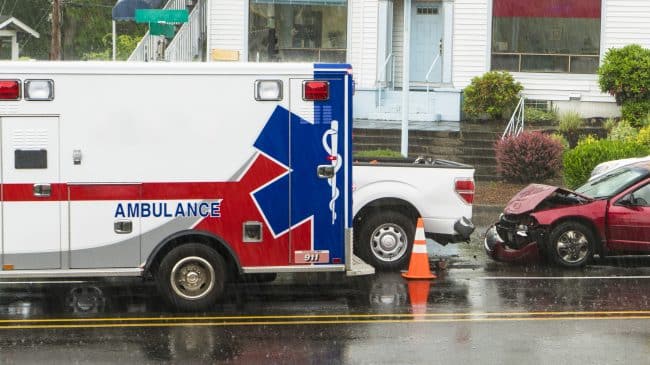First responders and taxpayers bristled when they heard the Arizona Public Safety Personnel Retirement System (PSPRS) had paid $120,000 in retroactive bonuses to three executives, given the system’s weak historical investment performance and solvency challenges.
While the bonuses raise important questions, what should really be ringing alarm bells is the excessive risk taking by all of the state’s pension plans, which has helped produce $26.6 billion in unfunded pension promises.
Servicing this pension debt is increasingly crowding out other state and local spending, and stands as a major obstacle to increasing pay for teachers and government workers.
None of Arizona’s pensions are truly healthy
PSPRS’s recent struggles are well known. It fell from 100 percent funded — meaning having enough assets to pay for the retirement benefits promised to workers — to just 50 percent funded from 2003 to 2015 due to a combination of poor investment performance and structural flaws in the plan’s design.
Politicians and voters have approved several reforms since 2016 aimed at improving the plan’s financial health. Though PSPRS today still only has $7.5 billion in assets to cover $16.3 billion in promised pension benefits, the reforms appear to have stopped its financial free fall and are starting to reverse a decade of growing insolvency.
Still, given the PSPRS bonus situation, it might be tempting to think the system should be folded into the relatively better performing Arizona State Retirement System (ASRS), which serves most teachers and government employees statewide.
Since ASRS is healthier — on paper — some politicians and pundits have long proposed letting ASRS handle all pension investment. But unfortunately, the grass is not exactly greener on the other side.
Bad investments have driven debt
ASRS currently has $15.6 billion in unfunded liabilities, with $38.6 billion in assets set aside to cover $54.2 billion in pension benefits promised to workers. Back in 2002, ASRS was fully funded, but underperforming investments since have driven well over half of the current pension debt.
Worse, ASRS projects it has a roughly 50/50 chance of hitting its own investment return target over time. Failing to meet investment expectations would increase the system’s debt.
While ASRS’s investment returns have outperformed PSPRS over different recent time spans, that’s essentially irrelevant because all of the state’s four major pension plans have failed to hit their own internal investment targets for some time.
Despite a decade-long run-up in the stock market, with many historic highs, Arizona’s four major pension systems are as bad off as they’ve ever been, with $48 billion in assets to cover $74.9 billion in pension promises.
Taking more risks isn’t paying off
Ratings agency Fitch highlighted this situation in a new report ranking Arizona as the number one risk-taking state when it comes to pension investments —with a whopping 86 percent of assets invested in riskier investments like equities and alternatives, such as private equity, hedge funds and real estate.
Yet, despite taking those risks, Arizona was ranked the sixth-worst state in terms of investment return performance relative to expected returns, a factor helping drive the massive growth in state pension debt.
Like any debt, pension debt needs to be paid down over time, which is important for those educator organizations seeking teacher pay increases to understand.
This isn’t fiscally or morally sustainable
Back when ASRS was still fairly healthy 15 years ago, teachers paid approximately 4% of their paychecks toward their pension benefits. However, the system’s growing pension debt has driven this amount to nearly 12% today — a figure ASRS actuaries expect to further rise in the coming years.
That larger share of teacher contributions, plus a larger sum of state funding, is going to pay down pension debt instead of toward raises or classrooms.
Arizona’s pension plans have taken on a lot of risk, and the reward has been major losses and rising costs. That’s not fiscally or morally sustainable, and it’s likely to worsen unless the Legislature gets serious about additional reforms that improve pension funding, set reasonable limits on actuarial assumptions and create more effective oversight structures.
This article originally appeared in the Arizona Republic.
Stay in Touch with Our Pension Experts
Reason Foundation’s Pension Integrity Project has helped policymakers in states like Arizona, Colorado, Michigan, and Montana implement substantive pension reforms. Our monthly newsletter highlights the latest actuarial analysis and policy insights from our team.

